Surgical drill.
Philippe Tramba, University lecturer and hospital doctor (MCU-PH), University of Paris Descartes Department of Dentistry, Charles Foix Hospital, Paris Public Hospital (AP-HP)
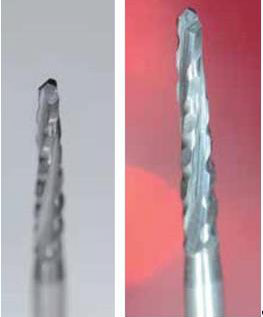
Today’s quiz is intended to recall some essential principles of surgical procedures, even though they might be considered “simple”. Among the various surgical recommendations already proposed in the issues (see ZI No. 3/4, 23 January 2013, pages 19- 27), 3 aspects have turned out to be particularly important: preservation of the surrounding periodontal tissues, preservation of the vestibular bone plate and adherence to the essential surgical principles.
Therefore, a comprehensive analysis of the situation is definitely still required and concerns the clinical and radiographic examinations, the patient and his or her (medical or psychological) condition/history, the practice team (practitioner and assistant), the practitioner’s ability to carry out the surgical procedure (skills, experience) and the technical field/instruments to be used. This is exactly where the use of the surgical bur H162ST.314.016 by Komet comes into play.
The specific shape of this rotary bur with high cutting efficiency contributes to the reduction of vibrations during use (in the turbine) and thus ensures comfortable use. It is available for highspeed micromotors and handpieces with short and long chucks.
Question 1. Can all surgical burs considered to be roughly identical, and do they have the same functions?
Question 2. Can surgical burs cut through different materials for tooth reconstruction (metal-ceramic crown, metal crown, resin, amalgam)?
Question 3. Are the vibrations inversely proportional to the speed of the instruments?
Question 4. Can the surgical drill H162ST.314.016 by Komet be used for:
- cutting roots?
- bone windows?
- apical surgery with apical ectomy?
- alveolotomy for ankylosis?
Question 5. Does this new instrument represent an improvement on surgical burs with comparable shapes and sizes?
Answers
- No. They are all different, regardless of the brand and their manufacturing origin. There are differences regarding the quality of the materials, calibration (especially at high speeds), resistance to wear and sterilisation cycles, and shapes in terms of efficiency and cutting precision.
- Yes and no. Given that the burs are not designed for all materials, the instrument can only cut prosthetic crowns made of gold. However, it can cut amalgam and resin. Likewise, reconstruction with plugging materials is not a contraindication for using these types of burs, unlike the cast materials, except for gold (which is rarely used nowadays).
- Yes, because every practitioner has his or her own habits of use. For my part, I work at very high speeds with FG chucks (turbine), but the product range meets all requirements.
- Yes and no. The instrument can be used for cutting of the root, bone windows and apical surgery with apicectomy. With regard to alveolotomy for ankylosis and all related aspects, it is preferable to use finer surgical instruments with a shorter working part to ensure greater precision and above all to minimise bone loss (see clinical situation no. 3).
- Yes. Even if the conventional instruments have already proven their worth, it is always possible to improve them. Over time, bone cutters have undergone numerous developments and the blade geometry has been constantly improved. For Komet’s new ST design, the drills used in craniotomy served as a model, with an improved cutting behaviour to ensure smoother operation and increased efficiency, without the uncontrolled micro- vibrations that can occur (in the turbine).
Extraction of tooth 45 due to severe caries decay. Goal: preserve as much healthy tissue (gum and bone) as possible
Clinical situations (photos) Situation 1
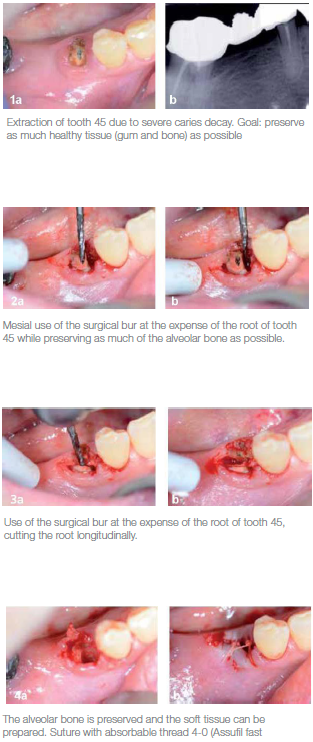
Situation 2 Situation 11

Another clinical situation with extraction of tooth 36 due to an existing carious infection of the cavity floor associated with an interradicular injury.
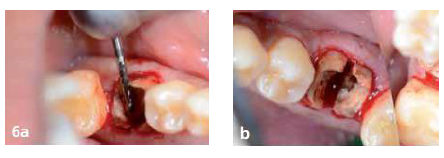 Use of the surgical bur to separate the mesial roots from the distal root. Very short treatment time to ensure preservation of the vestibular and lingual cortical bone. Depending on the clinical situation, a flap might be recommended as a visible opening to the root furcation.
Use of the surgical bur to separate the mesial roots from the distal root. Very short treatment time to ensure preservation of the vestibular and lingual cortical bone. Depending on the clinical situation, a flap might be recommended as a visible opening to the root furcation.
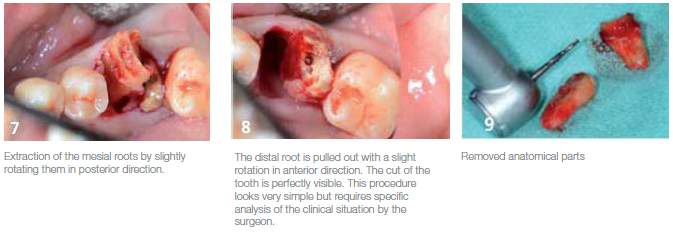
 The alveolus and interradicular septum are preserved and a dental implant can be inserted under optimal conditions (if the extraction and immediate placement option is chosen). If placement is not immediate, sutures are used for controlled wound healing.
The alveolus and interradicular septum are preserved and a dental implant can be inserted under optimal conditions (if the extraction and immediate placement option is chosen). If placement is not immediate, sutures are used for controlled wound healing.
Situation 11
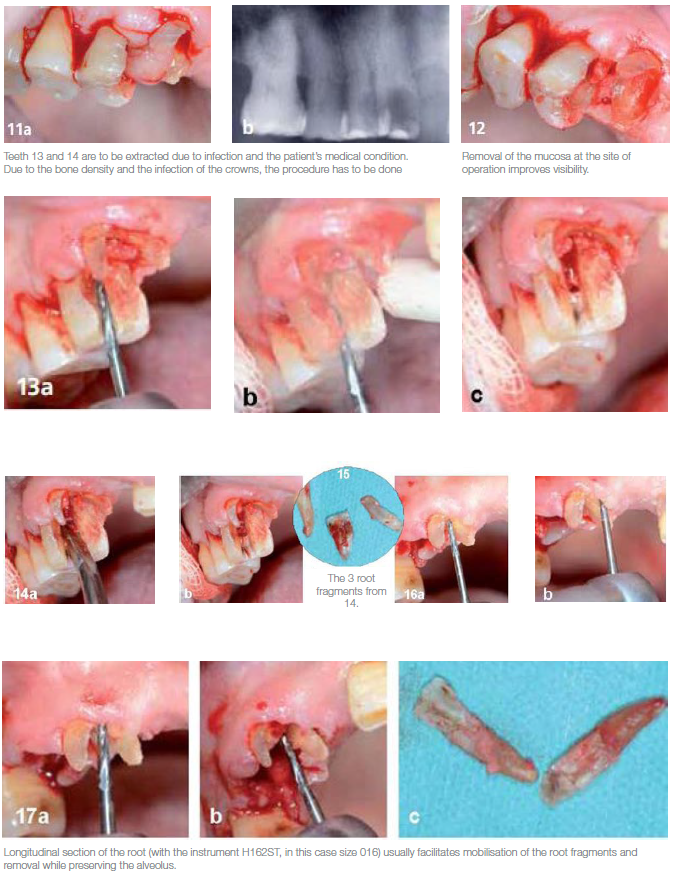
This article was published in L’INFORMATION DENTAIRE N0 31 – 21 septembre 2016 in its original French language with the title “Fraise chirurgicale”, Philippe Tramba, Université Paris Descartes”